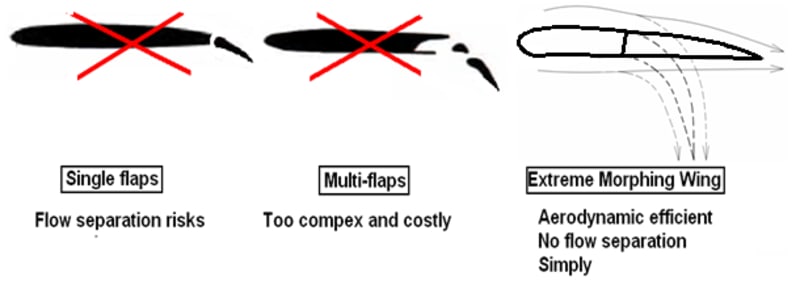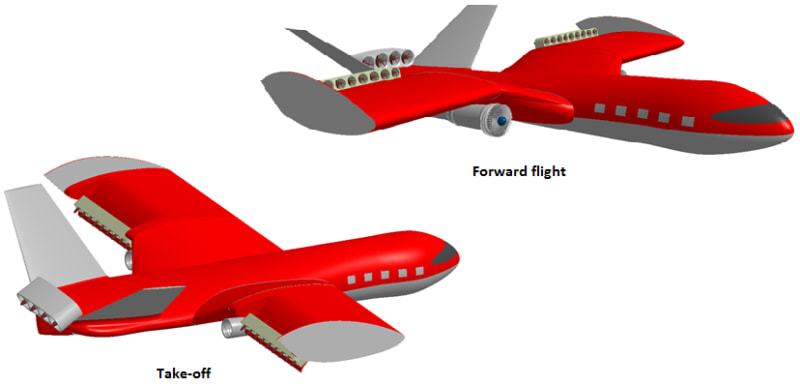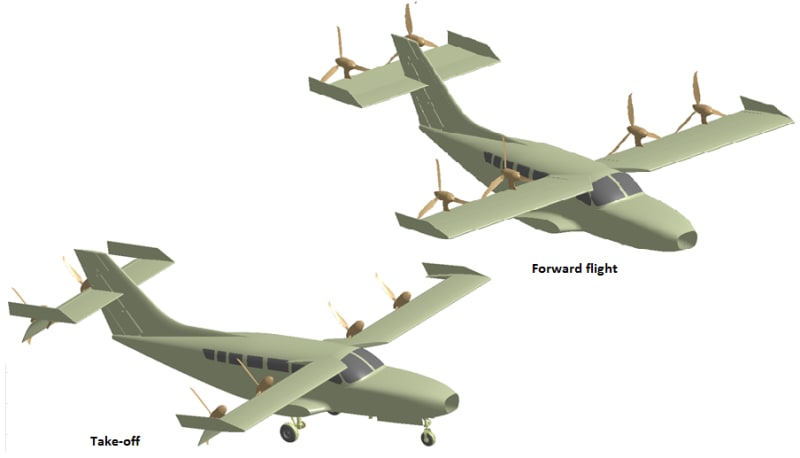A marketing study shows there is a need for a multi-purpose general aviation aircraft with the ability to take-off and land on short or ultra-short runways. These runways having several tens of metres can be easy built with much reduced costs in almost any places.
Recent advances in aircraft propulsion indicate a direction of development geared towards partial (hybrid) or total electrification. Over the past two decades, several key technologies for power systems and drive systems have matured to the extent that power and energy density have become suitable for a big part of aerospace applications and missions. Distributed electric propulsion (DEP) is an emerging set of technologies which enable new vehicle configurations by allowing the efficient distribution of many smaller propulsors around the airframe. One application of this technology is to greatly enhance the ultra-short takeoff and landing - USTOL capability of a fixed-wing aircraft. USTOL aircraft may have advantages over vertical takeoff and land (VTOL) configurations being considered for interurban passenger transport missions due to lower risk associated with the certification process and improved performance or reduced weight due to smaller required propulsion systems.
The key innovation of the proposed technology is the combination of the Distributed Electric Propulsion – DEP and Extreme Morphing Wing – EMW. EMW is represented by a wing having an extreme deformable trailing edge flap at an angle comprised between 40º to 90º. In the first figure is made a comparison between EMW and the existent high lift technologies. Usually EMW can support the thrust producing elements on its upper surface. The thrust producing elements can be of ducted fan type (second figure) or of open rotor type (the third figure).
The future USTOL aircraft can use standard fuselage from other aerial vehicles and in this case can obtain the following benefits:
- Reduced development cost with around 50%
- Reduced manufacturing cost with around 40%
- Improved control with the electric motors at low speed
- Increased efficiency due to hybridization (with 30% said NASA)
- Need much less power to take off and land
- Improved efficiency due to propeller deactivation in forward flight
- Improved redundancy
- Reduced maintenance due to the simplicity of the construction
- Scalability of the design from drones to large aircraft
Like this entry?
-
About the Entrant
- Name:Liviu Giurca
- Type of entry:teamTeam members:Liviu Giurca, Michael Soimar
- Software used for this entry:Catia V5
- Patent status:pending








